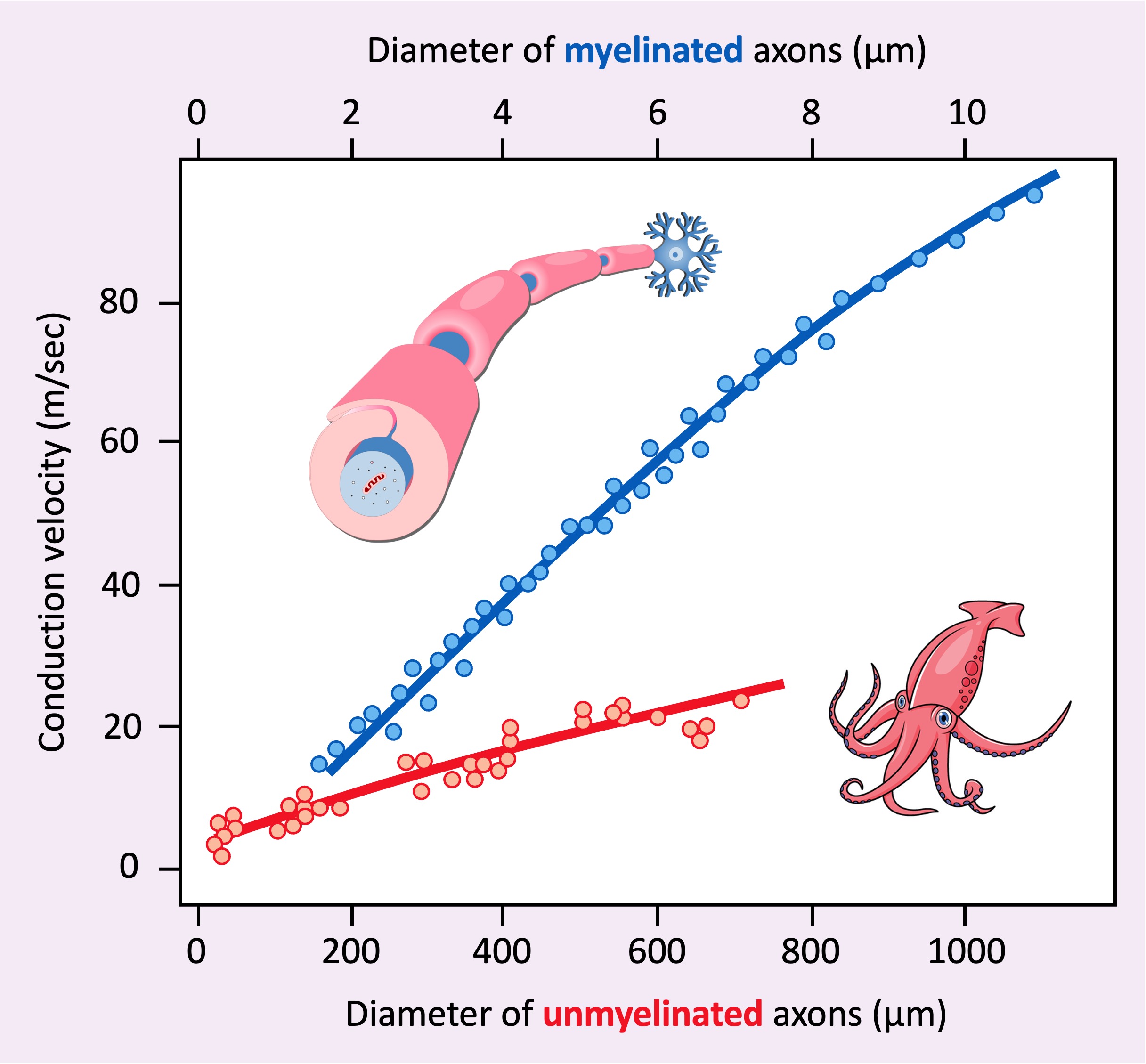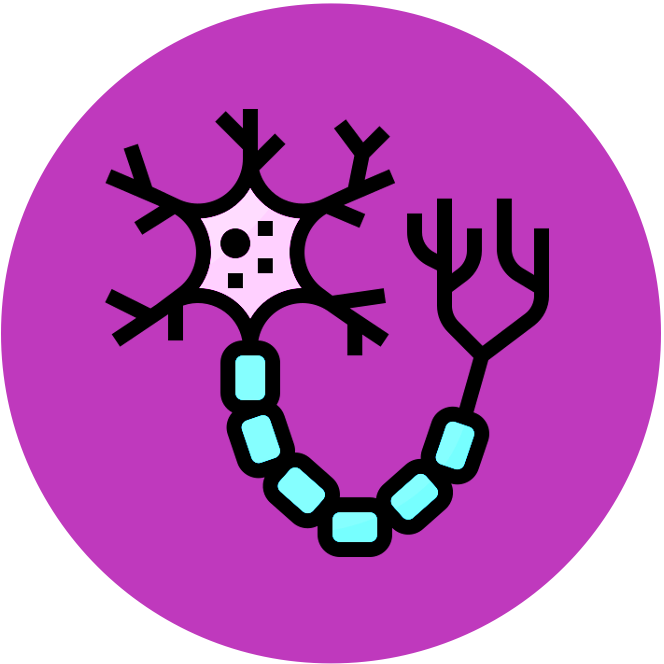

Conduction Speed
Neurons need to transmit nerve impulses very rapidly in order to ensure that the organism can maintain their survival by responding to changed conditions
-
However the speed at which impulses are conducted is not constant – larger organisms tend to have slower conduction speeds (i.e. a negative correlation)
-
This is because larger organisms tend to have complex neural pathways with more synaptic gaps, creating a delay in transmission
Size vs Conduction Speed

Factors Affecting Speed
There are multiple ways an organism can improve the conduction speed of nerve impulses:
-
Axons with wider diameters have faster conduction speeds (i.e. a positive correlation) – as there is less longitudinal resistance (so the current can propagate more easily)
-
Axons can also be insulated by a layer of cells that form a myelin sheath – this reduces the generation of action potentials to fewer points along the axon, increasing the flow of current
The disadvantage of myelination is that the insulating layer takes up space and requires energy (ATP), which in many circumstances may outweigh the benefits of improved transmission speeds
-
Giant squids have very large axon diameters and consequently have faster conduction speeds that other comparable animals, but the speeds are still generally slower than most myelinated fibres
Axon Diameter and Myelin





